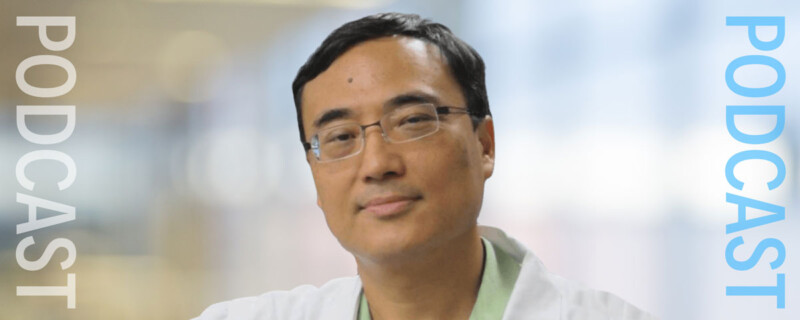
Advancements in Cell and Gene Therapy Stirred-Tank Bioreactor Suspension Culture
Podcast: Download (7.2MB)
Subscribe Here: Apple Podcasts | Spotify | RSS | More
Subscribe to the Cell Culture Dish Podcast on: iTunes | Google Play
In this podcast, we talked with Dr. Ma Sha, Head of Bioprocess Applications at Eppendorf SE about advancements and challenges in cell and gene therapy production along with solutions for scale up and transition to stirred-tank bioreactor suspension culture.
We began the interview by talking about the biggest advancements in cell and gene therapy, including CAR T-cell therapy development, clinical results and FDA approvals. Another area of great advancement is induced Pluripotent Stem Cell (iPSC) Culture technique. Dr. Sha explained that it used to be very difficult to culture iPSCs until it was possible to culture iPSC suspension spheres in stirred-tank bioreactors, which was a big breakthrough in the cell and gene therapy area.
I followed up by asking Dr. Sha what he sees as the major challenges in the development and production of cell and gene therapies that still need to be addressed. He said that one of the major breakthroughs has been the autologous therapies that have been approved, particularly CAR T-cell therapies. However, this has also been a major challenge, because the autologous model is not cost effective. As a result, there has been a shift toward developing allogeneic therapies and building this production model will be a major challenge moving forward. Another challenge on the manufacturing side is ensuring to follow Good Manufacturing Practice (GMP), as it has been a common request from cell and gene therapy companies.
Next, I asked him about the move from 2D to 3D culture and his experiences with this transition. Dr. Sha shared that several of the projects that Eppendorf bioprocess works on start as 2D culture in flasks, it is a natural place to start for most of the cell lines since they are attachment cells. They must then be converted into suspension culture to enable 3D culture, since 2D culture significantly limits the yield and productivity. He went on to say that if you look back at the evolution of antibody production, it was important to convert production to suspension cell culture and this is also necessary for the cell and gene therapy field. Moving from 2D to 3D culture and especially utilizing stirred-tank bioreactors enables much higher yields. As it stands, the yield for cellular therapy cell production is fairly low, especially compared to the industry standard of CHO cells used for antibody production, so a lot of improvement needs to happen.
We then discussed stirred-tank bioreactors and their increased use in cell and gene therapy development and production. I asked Dr. Sha what are the key factors that developers should consider when choosing stirred-tank bioreactors. He explained that stirred-tank bioreactors fit the model of allogeneic production. Autologous models are not suitable for stirred-tank bioreactors. Developer companies need to keep in mind that if they want to move to stirred tank bioreactor platform, they need the production model to be allogeneic. In addition, it is important to consider the support available with respect to scaling up and leveraging supplier experience. For example, Eppendorf bioprocess over the years has produced many application notes to help customers scale their manufacturing. They have even built model production systems in Eppendorf stirred-tank bioreactors. The program called “Scale up Assist” allows customers to skip much of the difficult calculations required to achieve reproducible yields when moving from smaller to larger vessels.
Eppendorf has a very long history of working in protein-based therapeutic cell culture production and about ten years ago expanded to include cell and gene therapy. I asked Dr. Sha in his experiences, what are the most important takeaways in terms of areas that still need work and advancements on the horizon. For instance, what can we learn from protein-based therapy cell culture to apply to cell and gene therapy production? He said that he thought that allogeneic production is a great lesson learned because simplicity is king. The ability to produce one therapy for different patients from one source cell line would greatly simplify the workflow and cost model. He stressed that the one takeaway that must happen for the field to become more successful would be the allogeneic model. This model also fits perfectly with stirred-tank bioreactors. Another takeaway for stem cell therapy would be the need for more success stories, including more FDA approvals to build successful examples so companies can follow the same path. There are a lot of cell therapies in clinical trials, but the number of approved therapies is small, especially when compared to CAR T-cell therapy, for example.
I closed the interview by asking Dr. Sha if he had anything else to add. He said that in addition to Eppendorf’s long history with stirred-tank bioreactors, they have acquired two bioprocess companies previously known as New Brunswick Scientific and DASGIP GmbH to add to their significant history and expertise in bioprocessing. In addition, Eppendorf has a lab in the United States and one in Germany where they are developing sophisticated cell and gene therapy applications including iPSC suspension culture in their SciVario® twin bioprocess controller. Using this tool, they have developed a very high-density mesenchymal stem cell culture of around half a million cells to 1,000,000 cells per ml. In an upcoming application note, they will showcase their extremely high yield 15 million cells per ml bioreactor solution. Eppendorf is committed to developing cutting edge applications to support customers in the cell and gene therapy space.
To learn more, please see:
Application notes links:
Stem Cell Exosome Production on the SciVario® twin, a Flexible Controller for Your Bioprocess Needs